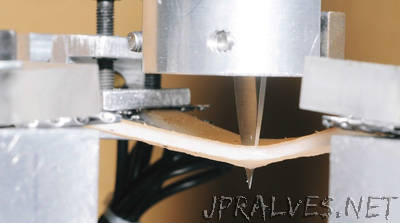
“Artificial skin with post-human sensing capabilities, and a better understanding of skin tissue, could pave the way for robots that can feel, smart-transplants and even cyborgs. Few people would immediately recognise the skin as our bodies’ largest organ, but the adult human has on average two square metres of it. It’s also one of the most important organs and is full of nerve endings that provide us with instant reports of temperature, pressure and pain. So far the best attempts to copy this remarkable organ have resulted in experimental skin with sensor arrays that, at best, can only measure one particular stimulus. But the SmartCore project, funded by the EU’s European Research Council and at the Graz University of Technology (TU Graz) in Austria, hopes to create a material that responds to multiple stimuli. To do so requires working at a nanoscale — where one nanometre represents a billionth of a metre — creating embedded arrays of minuscule sensors that could be 2 000 times more sensitive than human skin. Principal investigator Dr Anna Maria Coclite, an assistant professor at TU Graz’s Institute for Solid State Physics, says the project aims to create a nanoscale sensor which can pick up temperature, humidity and pressure — not separately, but as an all-in-one package. ‘They will be made of a smart polymer core which expands depending on the humidity and temperature, and a piezoelectric shell, which produces an electric current when pressure is applied,’ she said. These smart cores would be sandwiched between two similarly tiny nanoscale grids of electrodes which sense the electrical charges given off when the sensors ‘feel’ and then transmit this data. If the team can surmount the primary challenge of distinguishing between the different senses, the first prototype should be ready in 2019, opening the door for a range of test uses.”
